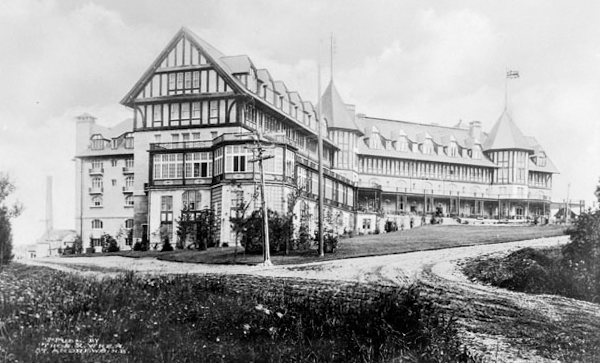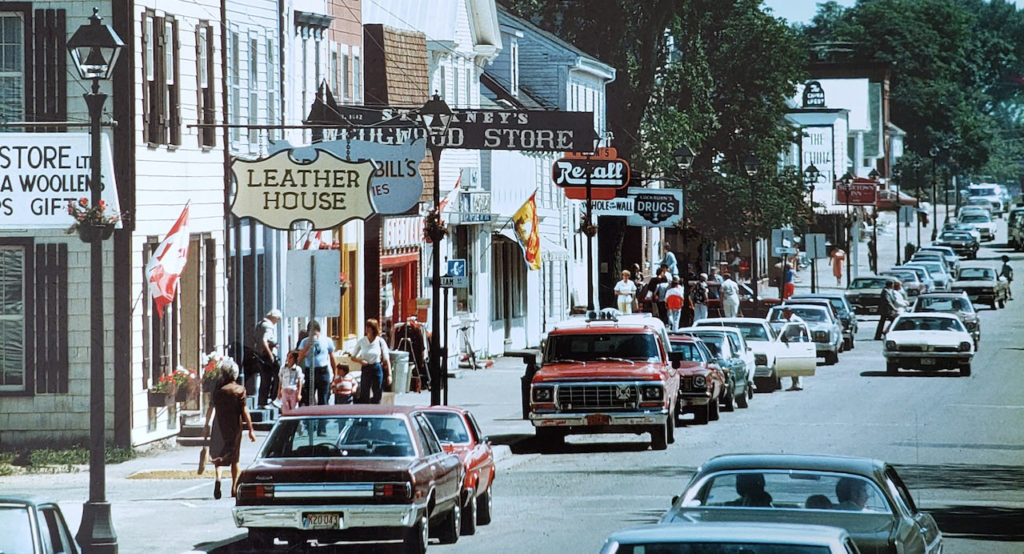In 1998 St. Andrews was designated a National Historic Site. Styles range from simple salt box and Cape Cod houses to elegant Georgian town houses and summer houses built in the American “shingle” style. Many of the latter were designed by Edward Maxwell, the renowned Boston and Montreal architect. The junction of Montague and King Streets, graced by an elegant Anglican church and town houses in Georgian and Federal styles, has been described as the finest street intersection in Canada. Many of the commercial buildings on Water Street also date from the late 18th or early 19th century and, where gable ends face the street, they create roof lines reminiscent of the older parts of Bergen or Bristol.
Our History
We would like to begin by respectfully acknowledging that we live on the traditional and unceded territory of the Peskotomuhkati (Passamaquoddy) Nation covered by the Treaties of Peace and Friendship.
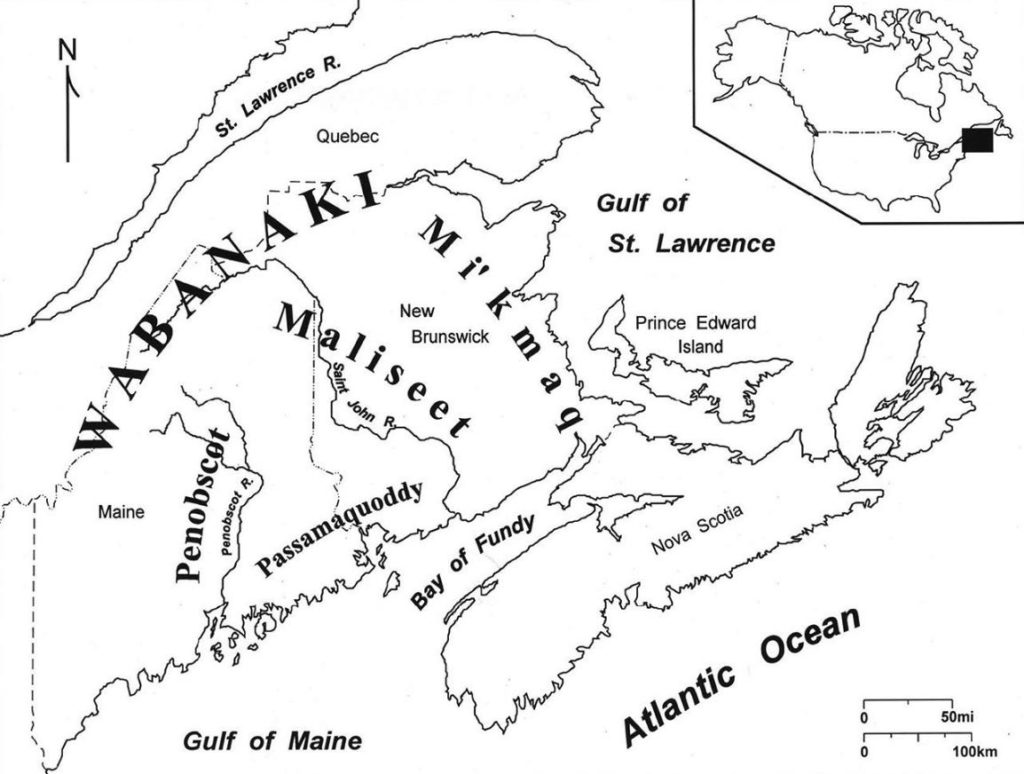
The Peskotomuhkati Nation
From qonaskamkuk.com:
The traditional territory of the Peskotomuhkati Nation is the watershed of the Schoodic (St. Croix) River and Passamaquoddy Bay. For centuries, the Peskotomuhkati way of life was a seasonal, cyclical round, in which the people left light footprints on the land. They would be in specific places at specific times of the year: upstream on the lakes in mid-December when the tommycod were spawning; inland after that to hunt caribou and tap maple; down to the Bay in the spring to dig clams and fish behind the weirs; out to the islands to take seal and porpoise; upstream to the salmon falls in the summer, fishing and gathering as they went. Qonasqamkuk, the present site of St. Andrews, was the fire place, the place where the councils of the nation were held. Well into the twentieth century, the people lived by this extensive use of the land, and Passamaquoddy Bay was like a generous cauldron full of food.
The 18th century
The Peskotomuhkati Sakomak (Chiefs) welcomed the Loyalists from Castine in the late 1700s. An agreement was reached at that time including terms upon which the Loyalists could stay. That agreement was never honoured.
Established in 1783 by the Loyalists, St. Andrews is one of New Brunswick’s oldest and most distinctive settlements. The original plat, now the nucleus of the modern town, is a neat rectangle half a mile deep and a mile long, laid out on a south facing hillside that slopes gently toward the harbour. It is a classic example of colonial town planning. The broad, straight streets form a regular grid, broken at intervals by open squares for public buildings and a market place. Except for Water Street, which runs along the shore, all the street names have royal or colonial associations. Thirteen are named after the children of George III and his wife, Charlotte, and two after faithful servants of the crown; the remainder are King, the show street, Queen and Prince of Wales. St. Andrews is a symbol as well as an enduring settlement.
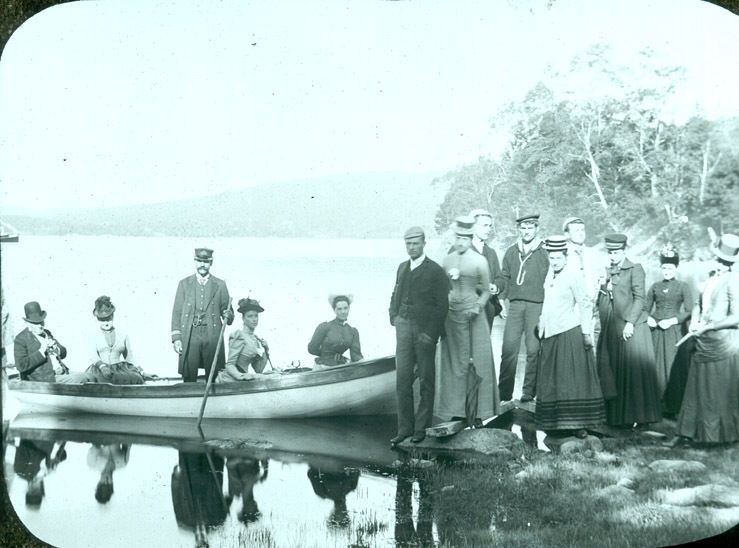
Boating party in St. Andrews circa 1887.
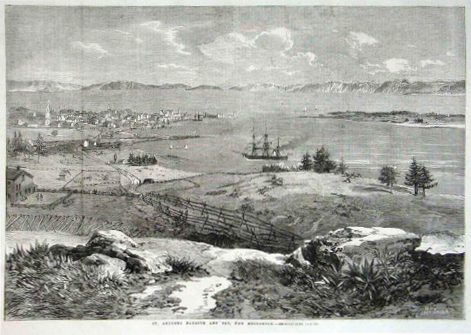
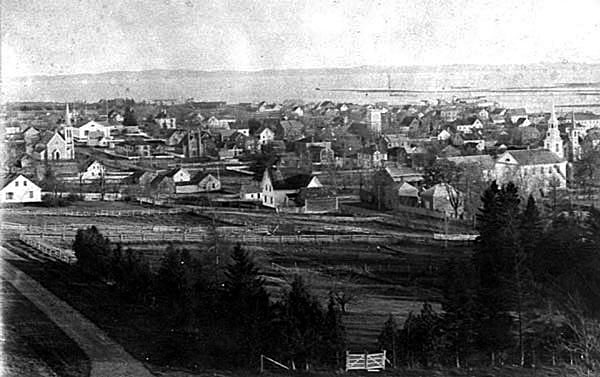
The 19th century
For about fifty years after its founding, the town prospered. St. Andrews was both the shiretown and a garrison town for British soldiers. It was also a thriving merchant settlement. Located at the tip of a long, narrow peninsula at the mouth of the St. Croix River it was, as one observer remarked, “prettily situated” to supply protected West Indian and British markets. Lumber and fish were shipped to the West Indies, in exchange for molasses and rum (still the favourite tipple), and lumber and wooden sailing vessels to Great Britain.
Separated from Maine ports only by a bay and a tangle of islands, the town’s merchants and shipowners also enjoyed a flourishing carrying trade when Great Britain and the United States were at odds or at war. Needing the other’s goods, but forbidden to trade, each country used St. Andrews merchants and ship owners to transfer goods “along the lines” (the international boundary) between British and American vessels.
With the decline of hostilities and the withdrawal of the colonial preference in the 1830s and 1840s the town’s economy crumbled. By 1880 the population had fallen to two thousand, roughly its present level, and perhaps half of that figure at the beginning of the century. Economic relief came only toward the end of the century with the building of railways and the desire of the rich to escape the summer heat, humidity and associated diseases of the eastern and seaboard cities. Blessed with offshore waters kept cool by the giant tides of the Bay of Fundy, and with a magnificent harbour and bay, St. Andrews was a natural choice for development as a fashionable summer resort.
The 20th century
Until the 1930s the town was an exclusive summer retreat. Overnight trains from Boston and Montreal brought prosperous, and often prominent, Americans and Canadians to well appointed hotels and elegant summer houses. Many came for a month or a season and, if they owned summer houses, they arrived with an entourage of maids, cooks, chauffeurs, and, in some cases, butlers. But with the growing wealth of the middle classes, and the increasing availability of the car, the town’s days as an exclusive resort were numbered. The hotels remain well appointed and the summer houses retain their elegance, but today’s visitors are far more likely to arrive by family car and chartered bus than chauffeured limousine.
As well as attracting health-seeking summer visitors, the great tides and cool water of Passamaquoddy proved irresistible to marine scientists. The Bay is extremely rich in plant and animal life. The Federal Government had maintained a biological research station in St. Andrews since 1908. The “Station,” as it is known to townspeople, is now the senior member of a trio of research and teaching institutions. The others are the Huntsman Marine Science Centre, which has university affiliations, and the Atlantic Salmon Federation, a privately funded organization dedicated to the well-being of the wild Atlantic Salmon.
With wild fish stocks in decline, government research is now directed at fish farming, widely regarded as the only means of sustaining a viable inshore fishery.
